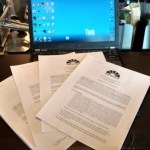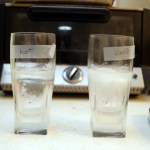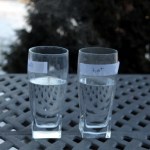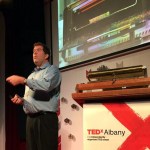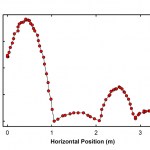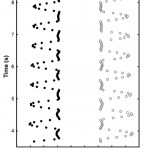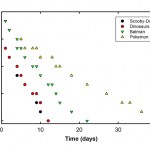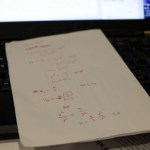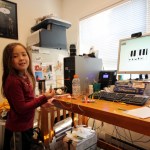Everyday
So, I tweeted about this yesterday, but I also spent the entire day feeling achy and feverish, so didn't have brains or time for a blog post with more details. I'm feeling healthier this morning, though time is still short, so I'll give a quick summary of the details:
-- As you can see in the photo (taken with my phone at Starbucks just before I took these to the post office to mail them), I signed a contract for a new book. Four copies, because lawyers.
-- The contract is with Oneworld Publications in the UK, who had a best-seller on that side of the pond with How to Teach Quantum Physics to…
It's been a month since the last links dump of posts from Forbes, though, really, I took a couple of weeks off there, so it's been less than that in terms of active blogging time. But I've put up a bunch of stuff in July, so here are some links:
-- The Physics Of Ancient Roman Architecture: First of a couple posts inspired by our trip to Rome, this one looking at the basic mechanics of the key structural element of Roman building, the arch.
-- What Ancient Roman Buildings Teach Us About Science And Engineering: Second post about Roman construction, in which looking into the question of how…
It's one of those days where none of the stuff I probably ought to be writing seems even slightly appealing, so instead I'm going to do something frivolous and morale-boosting, namely think out loud about an imaginary course. Despite being on sabbatical, I do still check my work email, and have caught the edges of a new round of arguments about whether we're providing enough "Gen Ed" science courses pitched at non-majors. The hardest part of this is always meeting the "science with lab" component, because those courses are pretty resource-instensive, and we have a limited set of them that we…
One of my favorite modern tales of scientific discovery is the Mpemba Effect, named after Erasto Mpemba, a schoolboy in Tanzania who noticed while making ice cream that hot mix put in the freezer solidified faster than cold. This counter-intuitive result has been replicated a bunch of times, and physicists and chemists continue to debate the reason for it.
It was bitterly cold this weekend, dipping down into the negative Fahrenheit, which wasn't great for, you know, leaving the house, but did provide an opportunity to test the Mpemba Effect. Because when the icy winds of winter blow, that's a…
It was bitterly cold over the weekend here in the Northeast, with daytime high temepratures in the single digits Fahrenheit. This has little to recommend it in terms of, you know, leaving the house, but it did provide an opportunity to try some SCIENCE!
Unfortunately, I left the notepad with the data (such as it is) on it at home when I came to Starbucks to write, so I can't do the detailed write-up. I'll use it for the photo of the day, though, from which you can probably guess what I was trying to do:
Starting condition for a science experiment.
Detailed explanation of methods and…
This one was a whole bunch of work for one smallish shot...
So, in past rounds of "science-y things with my fancy camera," I looked at the effect of ISO settings and apertures. This time out, I wanted to look at something moving, and the way that it blurs with increasing exposure time.
My initial thought was to try to take pictures of a falling ball, but it's too hard to get that to work consistently without setting up some kind of electronic trigger, and I wasn't willing to do that. But, of course, a swinging pendulum will always be in a relatively narrow range of positions, making it a…
One of the things about being a physicist that makes it tough to have any sensible work-life balance is that I'm constantly seeing little things and thinking "Oooh! Physics!" then getting distracted from what I'm actually supposed to be doing. Take, for example, our bathroom sink.
I have noticed, from time to time, a weird effect where the stream of water coming out of the faucet, which normally is fairly straight, will spread out when the water level in the container below gets close to the faucet. This turns out to be damnably difficult to replicate, though, and I've spent more time than I…
A couple of weeks ago, I gave a talk at TEDxAlbany on how quantum physics manifests in everyday life. I posted the approximate text back then, but TEDx has now put up the video:
So, if you've been wondering what it sounded like live, well, now you can see...
So, yesterday was my big TEDxAlbany talk. I was the first speaker scheduled, probably because I gave them the title "The Exotic Physics of an Ordinary Morning," so it seemed appropriate to have me talking while people were still eating breakfast...
The abstract I wrote when I did the proposal mentions both quantum physics and relativity, but when I actually wrote the talk, that made for a really awkward transition, so it's all quantum, all the time. I cover quite a bit of ground-- the no-animation-effects version of the slides is 42 slides and Word has it as just over 2500 words written out…
I followed up my ranty-y post about "Sports Science" with an experimental investigation over at Forbes, tossing a football around on the deck out back and then doing video analysis of the bounces. This provided a wealth of data, much of it not really appropriate for over there, but good for a physics post or two here.
One of the trajectories I looked at was this "forward bounce":
Here's the trajectory reconstructed in Tracker:
Trajectory of a football bouncing forward.
This is notable because not only does it bounce forward, it includes one of those big pop-up bounces that take people off…
Over in Twitter-land, Rhett Allain drew my attention to this "Sports Science" clip from ESPN, about a wild 4th-and-25 play in the Arkansas-Ole Miss game. This is nominally because I've been writing about big hits and bouncing balls over at Forbes, but really, I think Rhett's just working on a "misery loves company" theory, here:
It's a cool play, but as science, this leaves a lot to be desired. It's less "sports science" than "sports technobabble"-- mostly, they seem to be going for a science-y air by quoting lots of largely irrelevant numbers. I'm not sure why it matters how far most of…
A little while back, I used a photo of SteelyKid's toy Newton's cradle as the photo of the day, with a bonus video:
I mentioned that I was going to do some analysis of this at some point, but didn't have time right then. I had a bit of time to poke at this yesterday, though, so here's some physics making use of the normal-speed part of that video (I have another purpose in mind for the high-speed stuff; you'll need to wait for that).
The obvious thing to do with this is to plug it into Tracker and measure the position as a function of time. Here's a graph tracking the position of the two end…
A few years back, I did a couple of posts on the physics of a sad balloon (that is, a helium balloon that can no longer lift itself up to the ceiling), the first on simple buoyancy, the second on how long it takes for the helium to leak out. These were based on only a couple of data points, though, and it's always risky to extrapolate too far from just two points.
Of course, in a house with two kids, we have helium balloons show up with some regularity, and SteelyKid's birthday this year provided a bounty of them-- four shiny Mylar balloons, bearing cheerful images of Scooby-Doo, some cartoon…
The image here of a pancake cooking isn't particularly interesting in its own right, other than as documentation of our weekend ritual at Chateau Steelypips. Saturday and sunday mornings, Kate sleeps in while the kids watch cartoons and I cook pancakes for them. SteelyKid absolutely drowns hers in maple syrup, then refuses to eat them, while The Pip regularly wolfs down two plain pancakes, eating with his hands:
A pancake cooking at Chateau Steelypips.
As I said, this image isn't especially interesting, but it's here mostly as a teaser for a different thing, namely this thermal-imaging…
I got a little bit of time today to play with the new lens, which included a couple of nice shots of the kids. I'm trying not to have this be "photo of the kids of the day," though, so here's a different shot making use of the limited depth of field of the f/2.8 lens:
Scratch paper with calculations for a football physics post at Forbes.
That's the half-sheet (it's the back of a draft of a book proposal, if you must know) of projectile motion calculations that I scribbled down while writing this Forbes post about the dumb football commentary "he caught the ball at its highest point". Which…
A couple of weeks ago, after one of my Forbes posts, I got contacted by a publicist working for Makey Makey. They really wanted publicity in Forbes, but that's above my pay grade; I did, however, say that it sounded like the sort of thing my kids would get a kick out of, and I could mention it here...
So, they sent me one. It's a small circuit board with a USB connector and a bunch of places for alligator-clip leads, and functions as an input device for the computer-- if you complete a circuit from one of the clip leads to ground, it records that as a mouse click, or a key press of some sort…
It was nice and sunny this morning when I sat down at Starbucks to do some blogging, so I wrote a new Forbes post about the quantum physics that makes sunshine possible. This also brings in xkcd's take on the fundamental forces, and even a little bit of SteelyKid.
Sadly, it's now grey and dreary, but that's spring in New England for you. But if you'd like a small amount of quantum-mechanical sunshine, head on over to Forbes and check it out.
One of the things I struggle with a bit when it comes to writing about cool modern physics is how much to play up the weirdness. On the one hand, people just can't get enough of "spooky action at a distance," but on the other hand, talking too much about that sort of thing makes quantum physics seem like a completely bizarre theory with no applications.
Which is unfortunate, because quantum physics is essential for all manner of everyday technology. For example, as I try to explain in a new post at Forbes, quantum physics is essential to the cheap alarm clock that wakes me up in the morning.…
It's winter, and as usually happens in winter, I'm having a hard time opening the gate to our back yard. Why? It's not the snow, it's physics.
We have a standing policy that as much as possible, Emmy goes in and out through the back door for walks and small-animal-chasing in the backyard. This has occasionally been lifted, when a tree limb fell on our back gate, and when they were building the deck, but for the most part, when we had to go in and out through the front door, but she mostly knows not to go charging out the front door, which is the whole point.
Access to our fenced back yard is…
We're having a brutal cold snap at the moment, and while today's early-morning dog walk was considerably warmer than yesterday's, it was still 0F/-18C out, which is way colder than I like. When I came back in the house after the walk, my glasses instantly fogged up. But I had to take some stuff outside for the recycling, and within a few seconds of stepping back outside, they cleared right back up.
Now, I knew that would happen (which is why I hadn't bothered to wipe them off inside), but in one of those physicists-are-a-little-weird moments, for the first time, it occurred to me to wonder…
